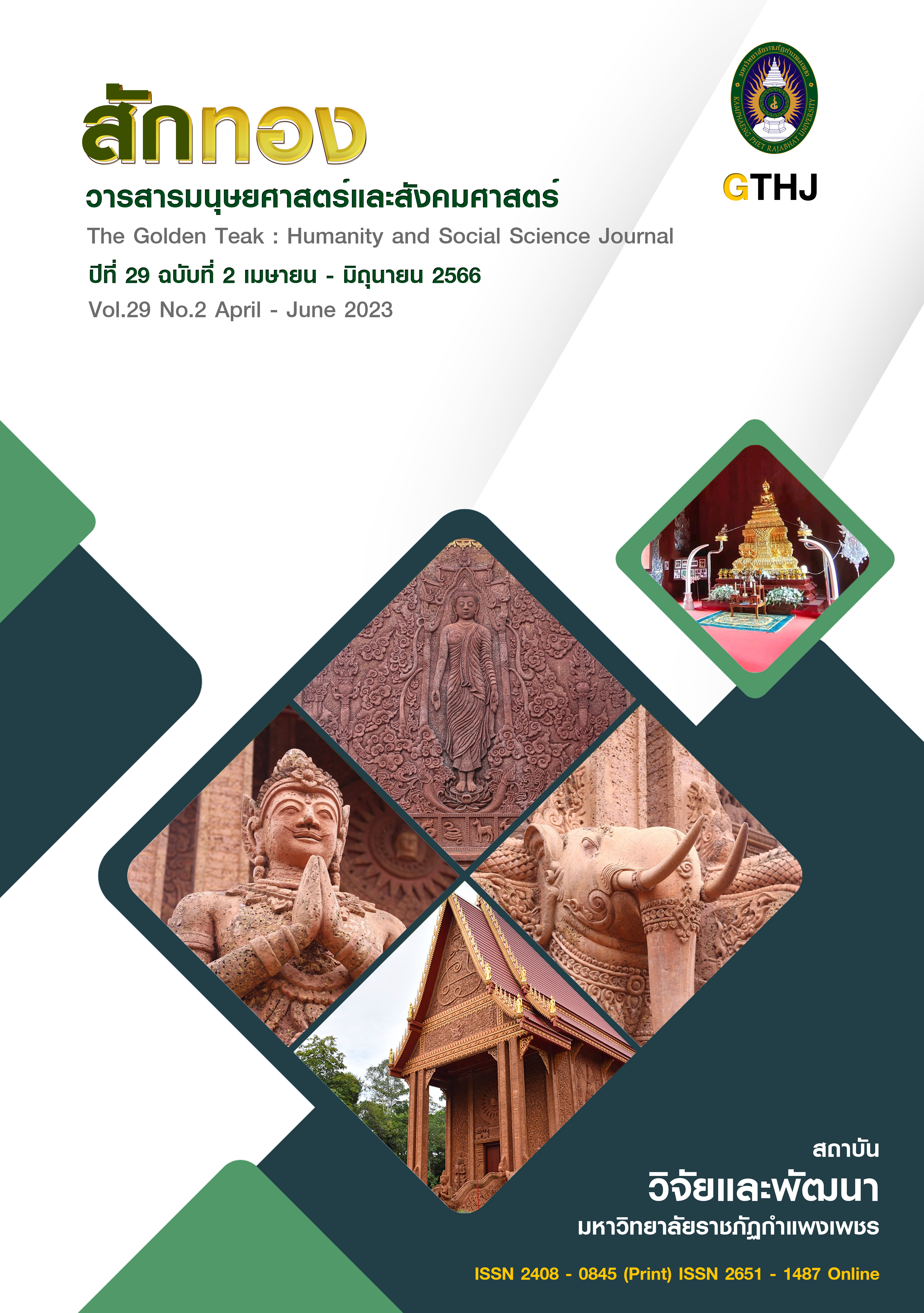Translation Strategies of Phrasal Verbs : A case study of the 2nd year English Major Students
Main Article Content
Abstract
This research endeavors to examine the translation strategies employed by 62 second-year English major students with respect to phrasal verbs. Specifically, the study aims to explore the translation strategies adopted by students by combining both literal and semantic meanings. A hybrid study design is utilized to analyze students' translation strategies based on a specialized test adapted from Becker (2014). The research draws upon the categorization of translation techniques proposed by Larson (1998), Newmark (1988), Molina (1998), and Albir (1994) for the purpose of analysis. The findings of the study indicate that the students' predominant translation strategy for phrasal verbs was semantic translation, accounting for 80.9% of the cases. On the other hand, literal translation was found to be used in only 17.8% of the cases, while 1.3% of the cases were left untranslated. These results suggest that sophomore English majors at Naresuan University possess an understanding of the semantic and syntactic features of phrasal verbs, albeit with some exceptions where a few students did not translate certain phrasal verbs. The implications of the findings of this study are twofold. First, the results could serve as a guide for teachers and students in teaching translation, particularly in the area of phrasal verb translation. Second, this study contributes to the broader body of research on phrasal verb acquisition and could inform the development of more effective pedagogical practices for teaching phrasal verbs.
Article Details

This work is licensed under a Creative Commons Attribution-NonCommercial-NoDerivatives 4.0 International License.
บทความที่ได้รับการตีพิมพ์เป็นลิขสิทธิ์ของวารสาร สักทอง : วารสารมนุษยศาสตร์และสังคมศาสตร์ สถาบันวิจัยและพัฒนา มหาวิทยาลับราชภัฏกำแพงเพชร
ข้อคิดเห็นใดๆ ที่ปรากฎในวารสารเป็นวรรณกรรมของผู้เขียนโดยเฉพาะ ซึ่งมหาวิทยาลัยราชภัฏกำแพงเพชรและบรรณาธิการไม่จำเป็นต้องเห็นด้วย
References
Amina, M.A. (2010). Lexical Translation Problems : The Problem of Translating Phrasal Verbs : The Case of Third Year LMD Learners of English (Unpublished doctoral dissertation). Mentouri University, Algeria.
Baker, M. (1992). In Other Words. London, Routledge.
Becker, T.P. (2014). Avoidance of English Phrasal Verbs: Investigating the Effect of Proficiency, Learning Context, Task Type, and Verb Type. Asian Journal of English Language Teaching, 24(1), 1-33.
Hurtado Albir, A. (1994). ‘Perspectivas de los Estudios sobre la traducción,’ in A. Hurtado Albir (ed.) Estudis sobre la Traducció, Col. Estudis sobre la Traducció, 1, Universitat Jaume I, 1(1), 25-41.
Juniardi, Y., Pahamzah, J. & Harimurti, D. (2016). An Analysis of Students’ Phrasal Verbs Translation at English Department of Sultan Ageng Tirtayasa University. Trans Con Proceedings.
Kartal, G. & Uner, S. (2017). The effects of conceptual metaphors on the acquisition of phrasal verbs by Turkish EFL learners. European Journal of Foreign Language Teaching, 2(2), 34-51.
Khumbangly, N. (2005). Achievement in Learning English Phrasal Verbs through the Instruction of Adverb Particle Meanings: A Case of Off, Out, and Up. MA Thesis, Thammasat University. [In Thai]
Larson, M.L. (1998). Meaning-based translation : A Guide to Cross-language Equivalence. University Press of America.
Molina, L. (1998). El tratamiento de los elementos culturales en las traducciones al árabe De Cienaños de soledad. Dissertation, Universitat Autònoma de Barcelona.
Newmark, P. (1988). A textbook of translation (Vol. 66). Prentice Hall, New York.
Palmer, F.R. (1988). The English Verb. London : Longman.
Saiya, C. (2011). Avoidance of Phrasal Verbs by M. 6 Students at Thriamudomsuksapattanakarn. Nonthaburi School : Language Institute, Thammasat University.
Santika, I.D.A.D.M., Putri, I.G.V.W. & Suastini, N.W.J.J.O.A.S.I.L. (2018). Translation of phrasal verbs into Indonesian. Journal of Applied Studies in Language, 2(1), 44-50.


